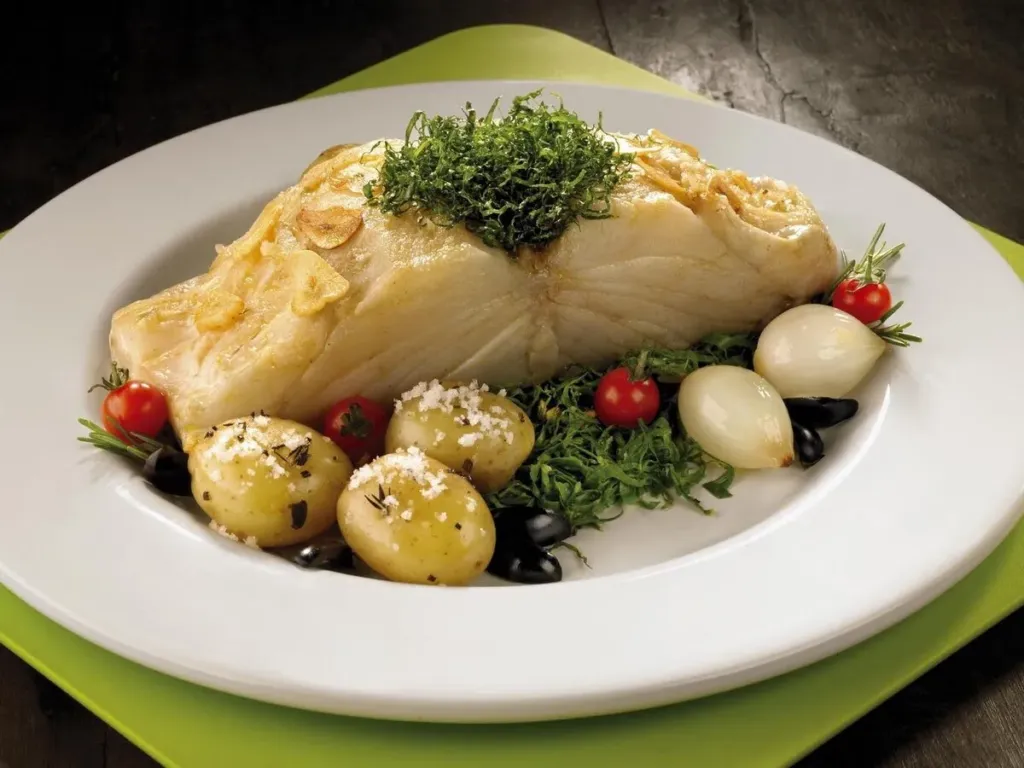Бакалао — это солёная и вяленая треска, которая веками была основным продуктом питания португальских моряков и жителей побережья. Несмотря на протяжённое морское побережье Португалии, сама треска там практически не ловится. Большая часть поставок осуществляется из Норвегии и Исландии. Секрет её популярности заключается в том, что солёная треска может храниться месяцами без холодильника, что было жизненно важно для мореплавателей в эпоху Великих географических открытий.
История и культурное значение
Первые упоминания о бакалао в Португалии относятся к XVI веку, когда португальские корабли начали заходить к берегам Ньюфаундленда в Канаде. В холодных водах Атлантики треска была в изобилии. Рыбу солили прямо на борту и вялили на ветру, чтобы сохранить её на долгий путь домой.
Бакалао стал неотъемлемой частью рациона, а затем и кулинарной культуры. В Португалии, как говорят, существует более 365 способов приготовления бакалао — по одному на каждый день года.
Факты и цифры
– Среднестатистический португалец съедает около 10 килограммов бакалау в год.
– Более 90% всей трески в Португалию импортируется.
– В стране существует более 1000 рецептов этого блюда.
– В Лиссабоне был создан Центр истории бакалау, в создание которого было вложено 1500 000 евро.
Похожие истории
Бакалау называют «fiel amigo» – верный друг. Это прозвище появилось потому, что в тяжёлые времена, во время войн и экономических кризисов, солёная треска помогала выжить тысячам семей.
Существует также романтическая легенда: моряки, ушедшие в море на полгода, привозили домой бочки с бакалау как символ верности и заботы о семье.
Туристические места, связанные с Бакалау
— Centro Interpretativo da História do Bacalhau, Лиссабон – музей, посвященный истории трески. Здесь можно посетить интерактивные выставки, попробовать себя в роли рыбака в шторм и узнать секреты кулинарии.
— Mercado da Ribeira, Лиссабон – знаменитый рынок, где можно попробовать десятки видов бакалау, от традиционной «бакалау а браш» до крокетов.
— Porto – город, где в старинных тавернах подают бакалау по старинным рецептам, а на набережной можно встретить рыбаков, рассказывающих истории о морских путешествиях.
— Nazaré – рыбацкий городок с богатой историей, где до сих пор можно увидеть, как рыбу сушат на деревянных решетках прямо на пляже.
— Viana do Castelo – портовый город, из которого когда-то «белый флот» отправлялся в северные моря за треской.
Виды бакалау
– Бакалау секо – классическая сушеная и солёная треска.
– Бакалау фреско – свежая треска, реже встречается в традиционной кухне.
– Бакалау демольяду – предварительно вымоченная треска, готовая к приготовлению.
– Бакалау десфиаду – измельчённая треска, часто используется для крокетов и салатов.
– Бакалау эспешиал – крупные толстые куски высшего качества, ценимые в ресторанах.
Цены
На португальских рынках килограмм сушеной бакалау стоит от 12 до 20 евро в зависимости от качества и размера куска. В ресторанах стоимость порции бакалао начинается от 10–12 евро в простых заведениях и может достигать 25–30 евро в ресторанах высокой кухни.
Современное значение
Сегодня бакалао — это не только еда, но и туристический бренд. Вокруг него строятся гастрономические туры, фестивали и кулинарные мастер-классы. Для путешественника попробовать бакалао в Португалии — значит прикоснуться к живой истории страны, ощутить вкус океана и понять, почему этот продукт стал символом национальной кухни.
- Cod Wars
- Bolivia
- Arabat Spit
- Luo
- Travel to Cambodia
- Traveling to Russia
- Decline in international tourism to the US: causes and consequences
- Win a four-night Greek getaway for two in one of the most stylish resorts in the Aegean courtesy of Sani Resort
- The World’s Most Dangerous Countries for Tourism in 2025
- Saami
- A quick look at Lucknow: one day in the Uttar Pradesh capital
- Barbados
- Big Game Fishing — захватывающий туризм на волне приключений
- Rising prices for travel in Germany in 2025: reasons, scale and consequences
- Madagaskar
- Chukchi
- Brazil Travel Costs
- Nicaragua
- Sahalin
- Uluṟu-Kata Tjuṯa and Kakadu National Parks Etched in Time

 United States
United States